By Robert Bruce
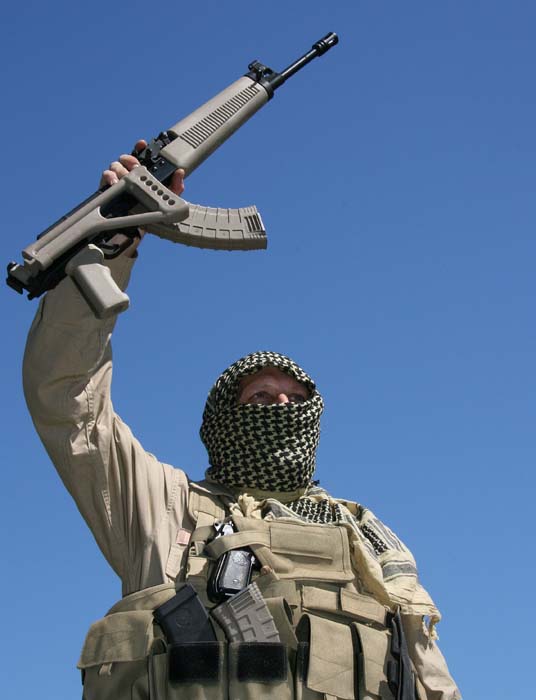
“My dad was a WWII veteran and was telling us about the war when we were young and we got interested in history. In school when the teacher tried to tell something about history, and you heard the story from my dad or his colleagues in the shooting club who were WWII vets, it was always a different story. So we became interested in that, researched it and became interested in firearms.” Ulrich Wiegand, Director, I.O. Inc.
Many entrepreneurs say that their path to success began at an identifiable point in childhood. In the case of Ulrich “Uli” Wiegand and his older brother Oliver, it came in the West German equivalent of middle school and high school in the historic city of Witten. Contradictions between a government mandated, politically correct WWII history curriculum and what they heard in vivid personal accounts of wartime experiences by family and friends set the youngsters on a search for truth. This grew over time into an intense interest in all things military, with weaponry holding particular fascination.
In an interview for SAR, conducted in his spacious office at I.O. Inc.’s headquarters in Monroe, North Carolina, the 39 year old Uli recalled that his father, a combat veteran of the Luftwaffe (Air Force), started the boys at a young age in what would quickly become a passion for small arms.
“Dad got us an air rifle, then he got a deactivated bolt action rifle, like a K98, I must have been seven or eight,” he said. “Then later on I joined the shooting club and shot .22s and later, high powered rifles.”
The gun laws in postwar West Germany were somewhat favorable to the Wiegand brothers in their growing interest in more exotic military hardware.
“We were active shooters, so we joined the shooting clubs, made friends there. At 18 you could get your licenses for handguns, rifles. We could buy deactivated guns…machine guns like MG34s and 42s. And we had live guns on our private collector licenses,” Uli explained. “Now you can have full automatic guns on your licenses but at that time you could only have semiautomatic guns like the G41, Garand, G43, stuff like that.”
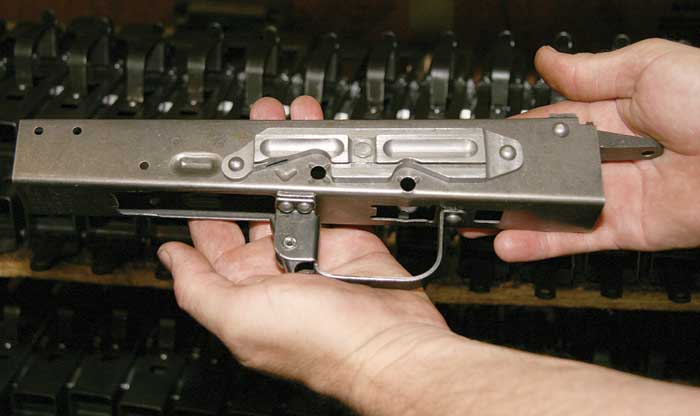
Wiegand Ordnance GmbH
When Oliver Wiegand, three years older than Uli, needed money to pay for university their hobby was a natural springboard to the business world. Collector friends in Switzerland pointed Oliver to a large cache of WWII Sten MKII submachine guns for sale in England.
Recognizing a fleeting opportunity, the 23 year old Oliver quickly set up Wiegand Ordnance GmbH in 1988, with a modest financial input from his mother. It was enough to finance the purchase, deactivation and importation of the famous British burp guns. Uli, noting this quick success, joined his brother the following year as a business partner in their next successful venture.
“The German government was destroying plenty of G3 rifles at that time,” Uli recalls. “We bought the scrap and had it all sorted through and sold all the good ones as spare parts.”
Major importers in the US eagerly snapped up the Wiegand brothers’ G3 parts kits which they advertised in the usual gun related publications. Sales accelerated when an enterprising metal-stamper began making semi-auto G3 type receivers, planting the seed of an idea that would bloom in the next few years.
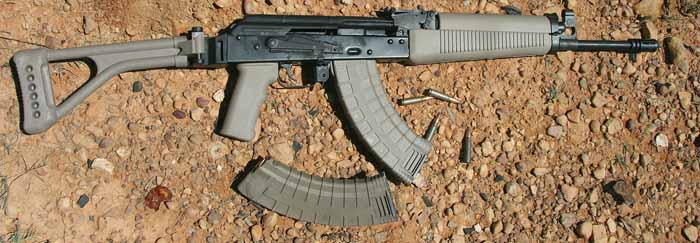
The Wiegand brothers traveled far and wide in search of large lots of suitable military weapons, parts and accessories. While there have been some major finds along the way – particularly the 50,000 brand new surplus Yugoslavian M59/66 SKS type rifles that they found a few years later – Uli vividly recalls some frustrations.
Asked if there was anything he desperately wanted to buy but couldn’t, he brought up several, including some WWII German tanks in Scandinavia, a film studio’s gun room and artillery collection in Bulgaria and a treasure trove found in a major weapon storage site in the former Soviet Union.
“It’s in an old salt mine, a huge underground city,” the younger Wiegand recounted. “They have there, I would say, sixty to a hundred thousand Thompson submachine guns – 1921s, 28s, M1A1s. Beautiful, brand new. But we couldn’t legally bring them into the US.
On the other hand, there was plenty of success to ease the sting. Diligent searches and canny business deals brought in enormous amounts of military surplus gun parts and other items from Europe and beyond. Notable among the acquisitions were thousands of surplus rifles from various combatants in World Wars I and II.
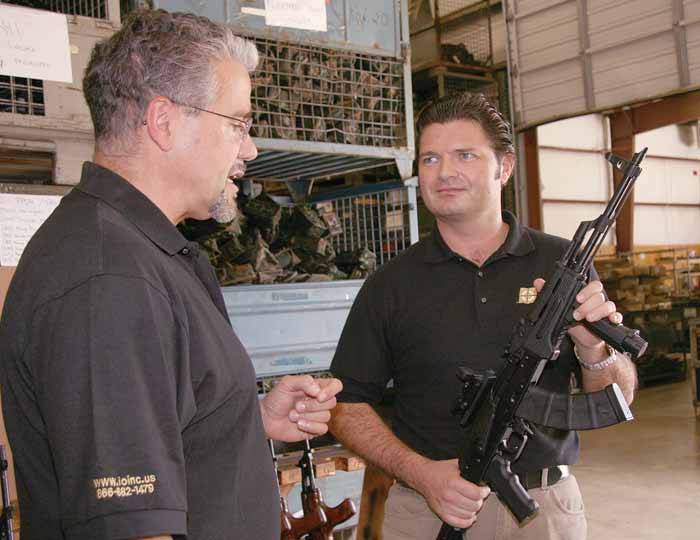
Ulrich is particularly proud of a special lot of Tsarist Russian M91 rifles found in Romania. “They have the original Imperial markings but also Finnish marking,” he said. “Made for Imperial Russia, they ended up there in Finland, captured during the Finnish-Russian War of 1939-40. Somehow the Russians got them back and provided them as aid to Romania.”
Honorable mention goes to a unique lot of K98 rifles imported from the former Soviet Union. “A Mauser Gewehr 98 which was shortened as the Karabiner (carbine) but it had Polish Radom markings and SS markings and 660 for Steyr,” Uli explained. “These guns were given to the new government of Poland right after World War I. Then the Poles set up the Radom plants in 1924 and they refurbished. When the Germans took over (in WWII) they chopped it down into a carbine and gave it to the SS.”
Building on a strong base of surplus sales, the Wiegand brothers’ business model evolved to include modern small arms. But a valued former customer soon became a formidable competitor.
“We started out with the Wum Rifle, an AK with a thumbhole stock,” Uli told us. “We went to Romania to the factory and said ‘build this rifle for the US market.’ We got everything set up and approved but then one of our competitors came in. They had been in business longer, had deeper pockets, so they bought the production rights in Romania. Took our idea and changed it to the WASR-10.”
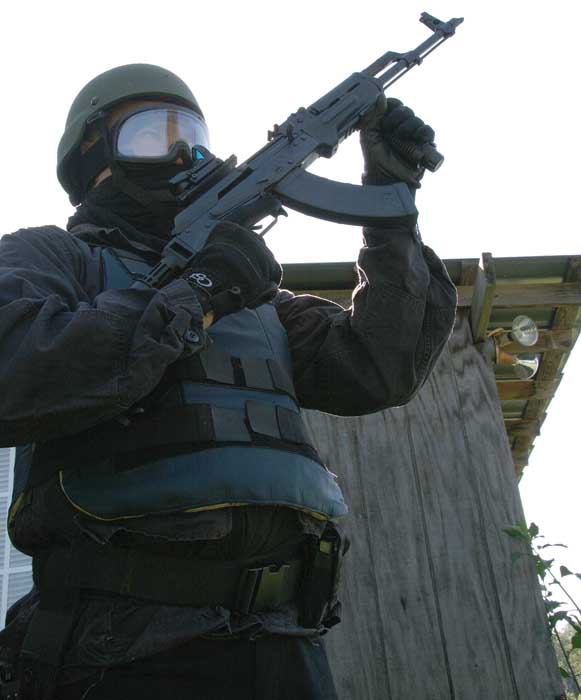
InterOrdnance of America, L.P.
Assessing the situation, the Wiegands decided to take the fight to their competitor’s turf and set up operations in the US.
“We asked a consulting firm to get us a business plan for the US and they recommended Charlotte, North Carolina,” Ulrich recalls. “Our first thought was ‘why and were is that!’”
The Charlotte metro area, perhaps best known to Americans as the home of NASCAR, proved to be a good choice. Monroe, a suburb, welcomed new business development, featured reasonable real estate prices and a labor pool with a work ethic and other traditional values. InterOrdnance of America, L.P., established in June, 1995, hired a general manager and began shipping tons of military surplus into a rented 2,000 square foot warehouse building in Monroe.
But it soon became apparent to the brothers back in Germany that things weren’t moving smoothly. “In August ’96 I came over to see what was going on,” Uli told us. “It was a mess. I weighed closing up or doing it myself. I decided to stay in the US and run the operation myself.”
InterOrdnance began an aggressive sales campaign, running big ads in Shotgun News and other publications for its military gun parts kits and a compelling selection of exotic war surplus items. Orders rolled in and, in 1998, the company built a new 5,000 square foot facility at its present location in a nearby industrial park. This was doubled in size a year later. Things seemed to be going great when fate dealt a cruel blow.
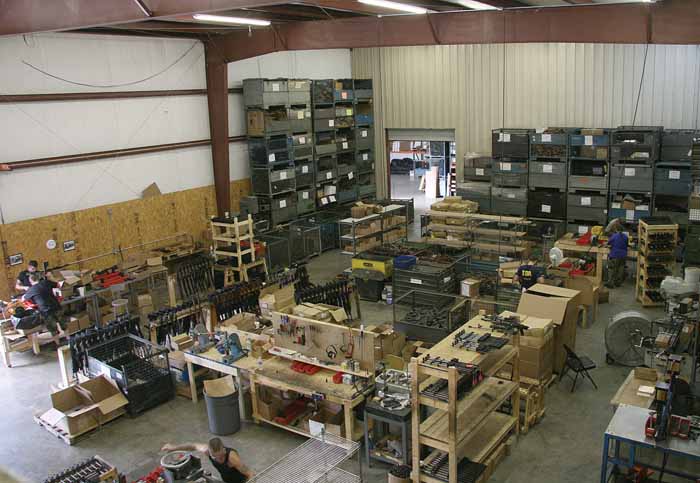
Indictment
“We had this big problem with ATF (Bureau of Alcohol, Tobacco, Firearms, and Explosives) over a shipment of L1A1 (FAL selective fire rifle) kits,” Ulrich explained. “Supposedly these weren’t deactivated properly.”
The cargo arrived in customs in October 2001, right after the September 11th terrorist attacks; a particularly sensitive time for heightened security. The resulting difference of opinion on deactivation went back and forth for more than two years. According to the government’s official news release following indictment on February 4, 2004, InterOrdnance was charged with several violations arising from importation and sale of parts kits for Imbel FAL rifles as well as Russian PPSh-41 and Austrian MP69 submachine guns. The government alleged that the Wiegands “imported the component parts knowing the machine guns had not been destroyed according to ATF specifications.”
The brothers mounted a vigorous defense that countered government claims on every point, particularly what they saw as the ATF’s flawed interpretation of its own detailed technical specifications for demilling guns. Ulrich believes their ordeal was made much harder by a poor choice of law firms and problems in the wake of the retirement during this time of Edward Owen, Jr., the highly respected Chief of ATF’s Firearms Technology Branch. Owen’s departure, he said, left a void in judgment and technical expertise that would previously have avoided this kind of erroneous adversarial action.
Both sides, apparently making the best of a bad situation, worked out a deal. In December 2005, Oliver and Ulrich agreed to plead guilty on minor recordkeeping violations and were fined $1,000 each. InterOrdnance, fined $10,000, was allowed to keep its Federal Firearms License. The government agreed to return the confiscated parts kits “after further inspection.”
Despite these relatively minor penalties the fight took a heavy toll. “In the end we got our L1A1 kits back, we had to cut them up, including the barrels,” Uli said. “With attorneys and everything else, the whole thing cost us over a million dollars.”
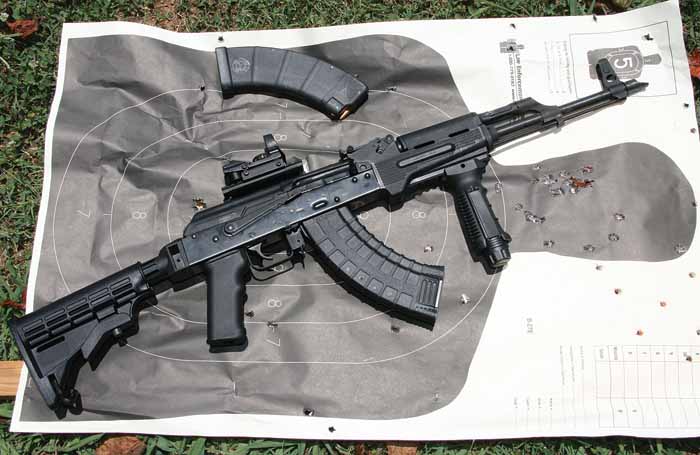
Bouncing Back
InterOrdnance continued to operate during their four year ordeal despite being handicapped by crippling legal fees, confiscation of the expensive parts kits and shaken consumer confidence from a lot of negative accounts in the press and Internet postings.
“When you fall on your face you get back up and walk again,” Uli declared. “I bought my brother out in 2005 and changed the company from a partnership to an incorporation.”
The new corporation carries the simple designation of I.O. Inc., which he points out has the very practical advantage of brevity in importer and manufacturer identification stamping. “In order to mark firearms you have to use the name on the license,” Uli said. “InterOrdnance of America L.P., Monroe, North Carolina, was way too long, so we’re just I.O. Inc.”
The receivers being stamped were on AK type rifles being imported from Romania and Ulrich expressed a great deal of dissatisfaction with their poor quality. “From a thousand guns you really had to throw away three hundred,” he said, “and from another two or three hundred guns you had to fix them in order to make them halfway decent. The quality is so, so terrible.”
This led directly to his decision that I.O. would begin exclusive manufacture of a unique tactical carbine.

STG-2000-C
“The STG 2000-C is basically a US-made version of the Wieger STG 940 rifle,” Wiegand explained, “the latest development from East Germany (which ceased to exist soon after the Berlin Wall fell in 1989). It’s a fantastic gun, a sleek design with basically all the features of an AR-15 or M16 with the reliability of an AK. That’s what you’re looking for. I have heard some stories from troops in Iraq and Afghanistan of problems with their M16 and M4. You have to keep these meticulously clean or they say they experience jamming.”
The reliability of I.O.’s semi-auto STG comes from its AKM type receiver and internal components. The rifle’s AR-15 features are primarily in a front sight mounted on the gas block and a muzzle mounted birdcage flash suppressor. An over-the-topcover sight mount clamped to the receiver’s integral rail aids tactical versatility.
While initial production of I.O.’s STG utilizes a combination of imported and American made components, work is near completion on a 100% US made gun. “We invested heavily in tooling to make the receivers and many other parts ourselves right here in the USA,” Uli told us. “We have very good barrels being made for us. Right now the only imported parts are the bolt, carrier, trunnion, and receiver cover, but everything will be US made by the end of the year (2009). We’re outsourcing some things to certain local machine shops but the goal will be having everything – every screw, pin, bolt and nut – made and assembled in our own facility. Proper space, proper work environment. It will go together like a jigsaw puzzle with all the tolerances right.”
The robust stamped sheet steel receiver for I.O.’s STG is nearly identical to that of the AKM but with some important modifications based on a close evaluation of several existing versions. “We wanted to make a receiver that is superior and to make sure we could use imported trigger components as well as US made,” Wiegand explained. “When we designed ours, we had some from Romania and Russia, as well as US receivers from a variety of manufacturers. Hammer follow down was a problem and it took two or three months to make sure that the trigger axle and the hammer axle location were optimal. Thousandths of an inch makes a difference. With the I.O. receiver you can put in imported or domestic components and it will work absolutely fine.”
I.O.’s beefy, custom built receivers start with thick steel blanks that are precision formed and heat treated for hardness and durability. Ulrich is proud of some additional features that significantly increase the service life, pointing out a ridge running crosswise on the bottom of the receiver to reinforce positioning of the trigger and hammer assembly.
Also, borrowing an idea pioneered by the Russians, I.O. stamps “crow’s feet” to strengthen pin hole locations. A fully machined mounting rail securely riveted to the receiver completes the value package, allowing quick but rigid attachment of a wide range of scopes or other devices.
Wiegand says that I.O.’s STG has several other noteworthy improvements. “The hand guard and buttstock are better and more sturdy than the East German. It has a neoprene butt plate that cushions against recoil. We gave it a way better sling swivel that doesn’t rattle around. This is a sturdy gun. All exclusive to I.O.”
Right now the guns are chambered for ubiquitous Eastern Bloc 7.62 x 39mm ammo fed from surplus and new-made AK-47 magazines, but we’re told that .223 and 5.45mm versions are in the works. “You can change the caliber by changing the bolt head to fit 5.45 and .223,” Ulrich explained. “You do that by reprogramming during the machining process.
Assembly of key components on the STG-2000-C rifles is done with speed and precision using some specially engineered production fixtures, Wiegand says. These ensure straight and tight alignment of the receiver, trunnion, barrel, and gas block with its integral front sight.

I.O.’s AKs
There are plenty of AK type rifles on the market, apparently selling well enough for I.O.’s wholesale network to urge Wigeand to jump back on the bandwagon.
“We were doing the STG and some of our dealers and distributors asked if we could make an AK,” Ulrich recalls, adding that a positive decision was made easier because virtually all AK parts were fully compatible with I.O.’s new STG receivers. But Wiegand maintains that he was not content to make just another Kalashnikov knock-off. “Just like with the STG,” he said, “we put a lot of thought and money into making it the best AK out there: a US-made AK.”
Ulrich showed us I.O.’s new Liberty Tactical Carbine and gave us a quick tour of this upgraded AK’s features and benefits. “Look at our stock,” he said, “it’s longer for better positioning on your shoulder. It has minimum recoil and muzzle rise because it’s straight line. There’s an ergonomic handgrip, new hand guard with Picatinny rails for tactical accessories. All of our AK rifles will have a scope mount rail that’s integral with the receiver. The accuracy grouping is fantastic; compare it with an AR-15/M16. Much more reliable and significantly cheaper than the AR-15.”
Wiegand told us that production experience and parts commonality with the STG has made it relatively easy to build I.O.’s distinctive AKs. “Our new 6 groove rifled barrels are made locally and they’re excellent quality,” he noted. “When we get our receivers in from the stamping house, made with our tooling, we always make sure they’re all right. We have our own quality control. I’ll show you how, on every work station, every person is responsible. And when each rifle is assembled, every one gets a function test firing with three rounds. When they pass the test and come back up to the front they get a final visual inspection before shipment to distributors.”
Energetic distributors and enthusiastic customer word of mouth have accelerated sales with little need for special advertising. “We’ve been overwhelmed with orders,” Uli says, “and haven’t had time to work on a promotional campaign. We’ll ship it to anyone to test it because we’re 100 percent convinced we have the best product out there at a reasonable price.”
Frank Discussion
During much of our time with Ulrich Wiegand, Frank Pennachio, I.O.’s business manager, had been sitting quietly in a corner of the office. He draws on a wealth of experience from 22 years as a law enforcement officer in New York’s Westchester County and during much of this time was heavily involved in LE training. After relocating to a quiet Charlotte suburb after retirement, fate intervened when Ulrich Wiegand bought a house on the same street. The neighbors became friends and then business associates for the past eleven months.
Pennachio chose this point in the interview to add some important observations on the company in general and AKs in particular, along with some words of appreciation for the local population. “This is a good community,” he said, “a lot of people here believe in gun ownership and gun rights. We fill the need for untrained labor to come in and work on our production line and do assemblies for us. Shan Agner, our production foreman, does a great job in teaching the guys the gunsmithing aspect; doing the assemblies like trigger groups and various furniture configs on the guns. We’re also fortunate to have some rather unique machinery that helps us to assemble the main part of the gun – barrel and trunnion assembly. So a lot of good things came together at one time.”
Production of the STG and AK rifles, Pennachio told us, is still a bit of a work in progress. “It’s limited so far as the actual manufacturing” he said. “We take parts that we’re having made for us, that we own the tooling on, that we’ve set specifications on, that we’ve had made locally and elsewhere in the United States, along with parts kits that are imported from overseas. And we put together US-compliant guns in an AK format.”
It didn’t take long during our three way conversation to note the very different personalities evident in I.O.’s German-born owner and the Italian-American New York ex-cop who runs the company’s daily business operations. Both men smiled when we asked how they get along.
“Uli has always been very hands on, doing everything himself,” Pennachio observed. “He’s never had a staff to get things done and he wants things done quickly. One of his favorite sayings is, ‘It’s hard to teach an old dog new tricks,’ but I keep trying (laughs). He’s a ‘need to know’ person, he has to see personally what’s going on. Sometimes I literally have to chase him off the production floor and back into the office to keep things – from a management perspective – running a little more smoothly.”
“Uli and I have lasted a whole lot longer in this business arrangement than anybody else expected us to,” Pennachio continued, “including, perhaps, ourselves. We value our friendship and respect each other’s positions. There’s a lot of head-butting going on but it’s from the heart. Like railroad tracks, we can think along parallel lines to getting the same things done. But we go about it different ways.”
Expanding the Product Line
I.O.’s product offerings are amazingly diverse with some notable departures from small arms. Their online catalog (www.ionic.us) lists uniforms, books, bayonets, holsters, medieval armor, and even Russian-built copies of WWII German military motorcycles.
While military surplus remains an important part of I.O.’s business model, Ulrich pointed to efforts underway to add new-production tactical products such as scopes, mounts and lights to the company’s offerings. How, we asked, do decisions get made on specific products?
The boss was quick to credit key members of his team. “Shan Agner, our production foreman, is the best idea man you can have,” Ulrich said. “He’s on top of what’s out there as a consumer and a shooter. Shan builds his own guns and loves going out on the range. Plus Frank with his law enforcement background and our reps at AMG (American Marketing Group). You throw things out and brainstorm.”
This collaborative effort resulted in a decision to build and sell a modernized version of the Romanian PSL, a high powered precision tactical rifle inspired by the Red Army’s famous Dragunov. The new SSG-2000 is I.O.’s own 100% US-made semi-auto, featuring modern synthetic furniture and a match-grade, chrome lined barrel. Initially offered in classic Russian 7.62 x 54R chambering, a 7.62mm NATO caliber version is said to be in the works.

Iconic German Clones
I.O.’s print advertisements for a couple of particularly unusual firearms have caught SAR’s attention. They strongly influenced a decision to profile the company, US dealer for superbly detailed and authentically configured live firing semi-auto versions of the WWII German military classic MP38 Maschinen Pistole and StG44 Sturmgewehr. Offering them at a fraction of the cost of original selective fire specimens, Wiegand had taken the lead in providing an opportunity for shooters and collectors to own and shoot these rare and highly desirable combat classics.
We were quite disappointed to learn that, while the company still has some of the initial batch of MP38-C replicas in stock, problems with the German manufacturer have made further dealings unlikely.
Ulrich told us that the deal for importation of StG44-C rifles had stalled. “We got everything approved with BATFE on our end,” he said, “and even had all the compliance parts made here locally. But they (Sport-Systeme Dittrich) never delivered anything but a prototype and we’re suing them for $50,000 of our money.”
It’s clear that Wiegand has a particular affection for the distinctively configured StG44, widely considered to be the father of all modern assault rifles. He’s determined to keep the semi-auto Sturmgewehr project moving but with a decidedly interesting twist inspired by those full scale working models that originated in the Japanese non-gun market.
Ulrich enthusiastically showed us an amazingly realistic stamped metal and wood replica StG44. “Look at it, the original weight, it’s fantastic!,” he declared. “We have an engineer working on this making it into a .22 caliber semi-auto. And we’ll put some nice original marking on it.”
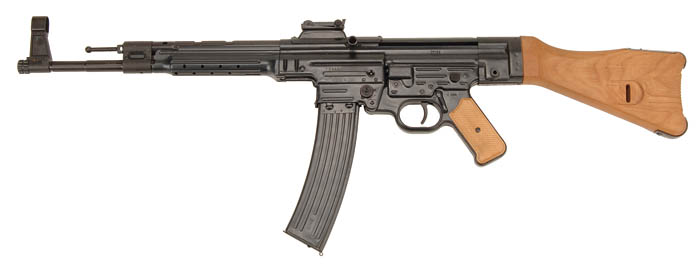
Distribution Network
Both Wiegand and Pennachio praised the work of American Marketing Group’s field representatives who show I.O.’s products nationwide. “AMG represent us to distributors and at the trade shows,” Pennachio said. “Vinnie (Vincent) Chiarenza is their lead man; well known and respected with 35 years in the industry.”
“Distributors are looking for a steady supply of merchandise,” Wiegand added. “They want quality, of course, and pricing as well. We developed a nice relationship with all the distributors who carry our products.”
I.O.’s STG-2000 and AK-47 rifles are available through a network of distributors covering the entire United States:
Ellett Brothers – www.ellettbrothers.com
Colorado Guns Sales – www.cogunsales.com
Atlantic Firearms – www.atlanticfirearms.com
AmChar Wholesale – www.amchar.com
Lew Horton Dist. Co. – www.lewhorton.com
Camfour, Inc. – www.camfour.com
Interstate Arms – www.interstatearms.com
Davidson’s Firearms – www.galleryofguns.com
Valor Corp. – www.valorcorp.com
RSR Group – www.rsrgroup.com
Bill Hicks & Co., Ltd. – www.billhicksco.com
Bangers Shooting Source – www.bangersusa.com
Personal Collection
Those of us who have longed for the ways and means to increase our personal collections of guns and militaria should closely follow the example set by Uli Wiegand. We found a small part of his acquisitions from more than two decades of worldwide buying trips piled high in various parts of I.O.’s facility.
There were pallet loads of historic long arms carefully catalogued and boxed, along with crew served weapons, tripods, and more, packed in crates and stacked in corners. The muzzle of a wheeled Russian anti-tank gun, last and best of many dozens Wiegand imported and sold, pointed to his sidecar-equipped WWII German Zundapp motorcycle.
These artifacts and many more are waiting patiently for the time when they can be properly displayed in a showroom/museum planned on site.
I.O. Incorporated
The company does business by online orders and as a wholesale distributor. It does not maintain a showroom for walk-in customers. However, it is open by appointment every Friday for FFL dealers and private customers to pick up orders and to speak with the sales staff.
I.O.’s user-friendly website is packed with information and photos on hundreds of pieces of militaria, and gun items ranging from AK-47 grenade launcher sights to ZB-37 ammo belts. Links are provided for instant access to several in-depth published reviews of the STG-2000-C and other products. Don’t miss the video of the Dnepr motorcycle in action at the tab “Museum Items and Vehicles.”
I.O. Incorporated
3305 Westwood Industrial Drive
Monroe, North Carolina 28111
Telephone: (866) 882-1479.
Internet: www.ioinc.us
(Special thanks to Shan Agner for arranging the live fire photo session at Efird’s Rifle Range, Inc., in Albermarle, NC. Also to Ed Efird for his patience and good humor while we were his guests at his excellent shooting venue. Contact Ed at (704) 244-6528)
| This article first appeared in Small Arms Review V13N5 (February 2010) |












